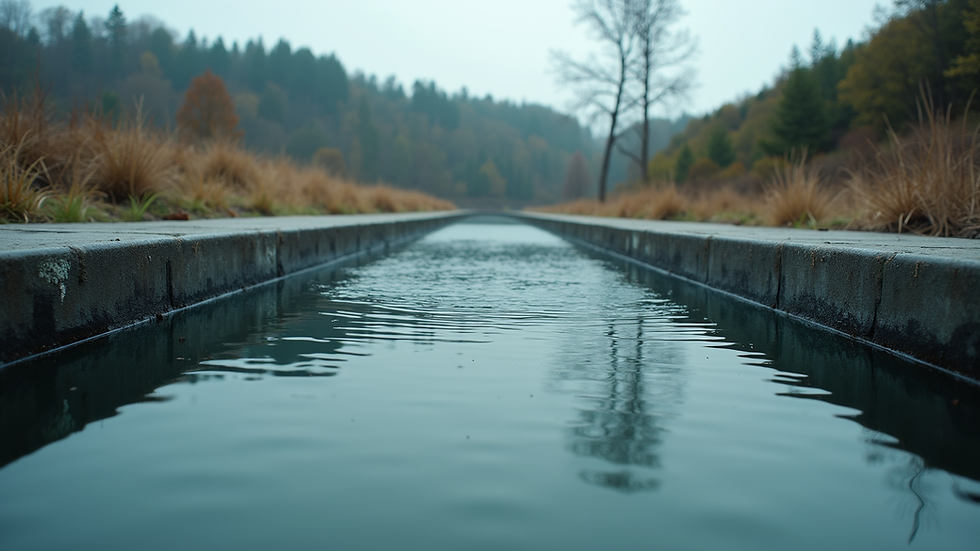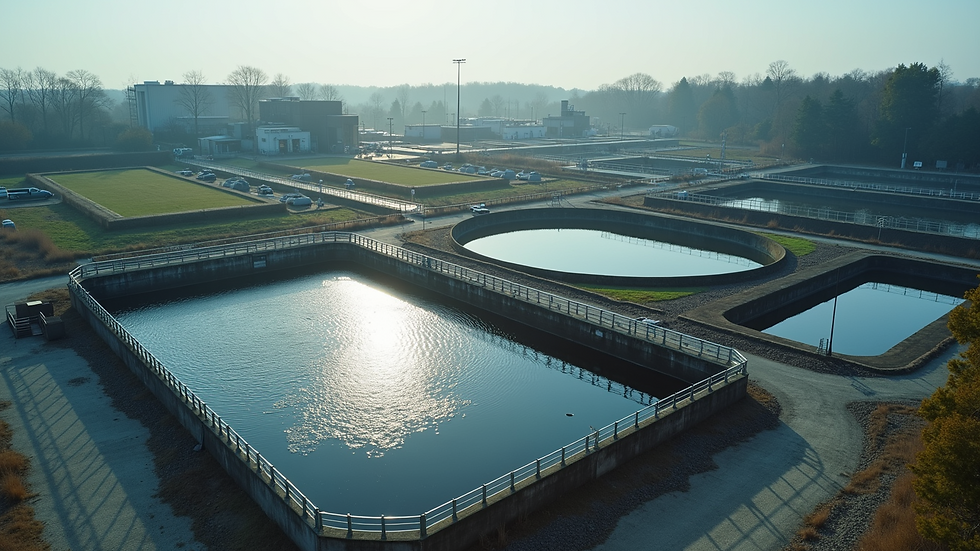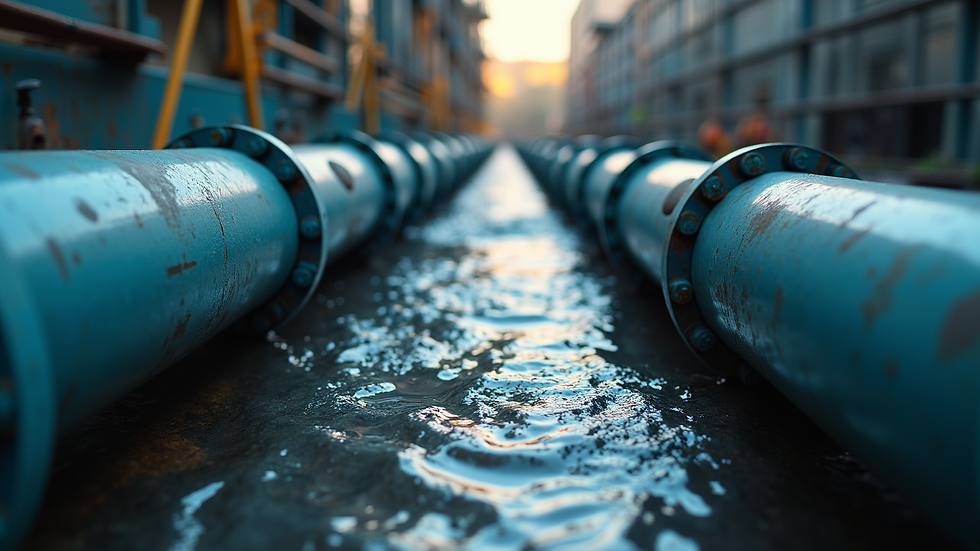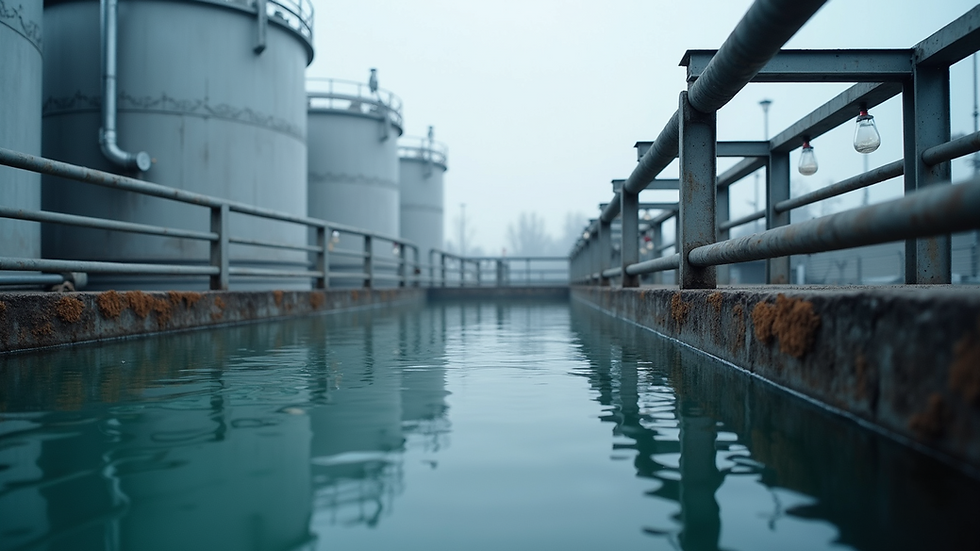Effective Industrial Wastewater Treatment Methods
- palwinder kaur
- Sep 16
- 4 min read
Industrial wastewater treatment is a critical process for protecting the environment and ensuring sustainable industrial operations. Industries generate large volumes of wastewater containing various pollutants that can harm ecosystems and human health if not properly treated. This article explores effective methods for treating industrial wastewater, providing practical insights and actionable recommendations to help industries manage their water discharge responsibly.
Understanding Industrial Wastewater Treatment
Industrial wastewater treatment involves a series of processes designed to remove contaminants from water used in industrial activities. The goal is to reduce pollutants to acceptable levels before releasing the water back into the environment or reusing it within the facility. Treatment methods vary depending on the type of industry, the nature of pollutants, and regulatory requirements.
Some common pollutants found in industrial wastewater include heavy metals, organic compounds, suspended solids, oils, and chemicals. Effective treatment ensures these substances do not cause environmental damage or pose health risks.
Key Treatment Processes
Preliminary Treatment
This step removes large solids and debris through screening and sedimentation. It protects downstream equipment from damage and clogging.
Primary Treatment
Involves physical processes like sedimentation tanks to settle suspended solids. It reduces the load on secondary treatment.
Secondary Treatment
Biological processes break down organic matter using microorganisms. Activated sludge systems and biofilters are common methods.
Tertiary Treatment
Advanced treatment to remove remaining contaminants such as nutrients, heavy metals, and pathogens. Techniques include filtration, chemical precipitation, and disinfection.
Sludge Treatment
The byproduct sludge is treated separately to reduce volume and toxicity before disposal or reuse.
Each stage plays a vital role in ensuring the treated water meets environmental standards.

Industrial Wastewater Treatment Technologies
Several technologies are employed to treat industrial wastewater effectively. Choosing the right technology depends on the wastewater composition, treatment goals, and cost considerations.
Physical Treatment Methods
Sedimentation: Allows solids to settle naturally in tanks.
Filtration: Removes suspended particles using sand filters or membrane filters.
Flotation: Uses air bubbles to float oils and grease to the surface for removal.
Chemical Treatment Methods
Coagulation and Flocculation: Chemicals are added to aggregate fine particles into larger clumps for easier removal.
Neutralization: Adjusts pH levels to neutralize acidic or alkaline wastewater.
Oxidation: Breaks down organic pollutants using oxidizing agents like chlorine or ozone.
Biological Treatment Methods
Activated Sludge Process: Aerobic bacteria consume organic matter in aeration tanks.
Trickling Filters: Wastewater passes over a bed of media colonized by bacteria.
Anaerobic Digestion: Microorganisms break down organic matter in the absence of oxygen, producing biogas.
Advanced Treatment Technologies
Membrane Bioreactors (MBR): Combine biological treatment with membrane filtration for high-quality effluent.
Reverse Osmosis (RO): Uses semi-permeable membranes to remove dissolved solids.
Electrochemical Treatment: Uses electric current to remove contaminants.
Industries often combine multiple methods to achieve optimal results.

What is the difference between sewage and industrial wastewater?
Understanding the difference between sewage and industrial wastewater is essential for selecting appropriate treatment methods.
Sewage primarily consists of domestic wastewater from households, containing organic matter, human waste, and household chemicals. It is relatively consistent in composition and easier to treat biologically.
Industrial wastewater originates from manufacturing and industrial processes. It contains a wide range of pollutants such as heavy metals, toxic chemicals, oils, and high concentrations of organic and inorganic substances. Its composition varies significantly depending on the industry.
Because of these differences, industrial wastewater often requires specialized treatment technologies beyond conventional sewage treatment. For example, textile industry wastewater may contain dyes and chemicals that need advanced oxidation processes, while metal plating wastewater requires heavy metal removal techniques.
Proper identification and characterization of wastewater types help in designing effective treatment systems that comply with environmental regulations.

Best Practices for Industrial Wastewater Management
Implementing effective wastewater treatment is not just about technology but also about adopting best practices throughout the industrial process.
Source Reduction
Minimize water use in production processes.
Substitute hazardous chemicals with less harmful alternatives.
Implement process modifications to reduce pollutant generation.
Segregation of Wastewater Streams
Separate highly contaminated streams from less polluted ones.
Treat streams individually to optimize treatment efficiency.
Regular Monitoring and Maintenance
Conduct frequent water quality testing.
Maintain treatment equipment to prevent failures.
Train staff on operational best practices.
Reuse and Recycling
Treat wastewater to a quality suitable for reuse in cooling, cleaning, or irrigation.
Reduce freshwater consumption and lower discharge volumes.
Compliance with Regulations
Stay updated with local and national environmental standards.
Obtain necessary permits and conduct environmental impact assessments.
By integrating these practices, industries can reduce treatment costs, improve environmental performance, and enhance sustainability.
Future Trends in Industrial Wastewater Treatment
The field of industrial wastewater treatment is evolving with new technologies and approaches aimed at improving efficiency and reducing environmental impact.
Smart Treatment Systems
Use of sensors and automation for real-time monitoring and control.
Data analytics to optimize treatment processes.
Green Technologies
Adoption of natural treatment systems like constructed wetlands.
Use of renewable energy sources to power treatment plants.
Resource Recovery
Extract valuable materials such as metals and nutrients from wastewater.
Convert organic waste into biogas or biofertilizers.
Nanotechnology
Application of nanomaterials for enhanced pollutant removal.
Development of advanced membranes with higher selectivity.
These innovations promise to make industrial wastewater treatment more sustainable and cost-effective in the future.
For industries looking to implement or upgrade their wastewater treatment systems, partnering with experts in industrial wastewater treatment can provide tailored solutions that meet specific needs and regulatory requirements. Effective treatment not only protects the environment but also supports long-term business viability.
By understanding the various treatment methods and adopting best practices, industries can significantly reduce their environmental footprint and contribute to a cleaner, healthier planet.



Comments